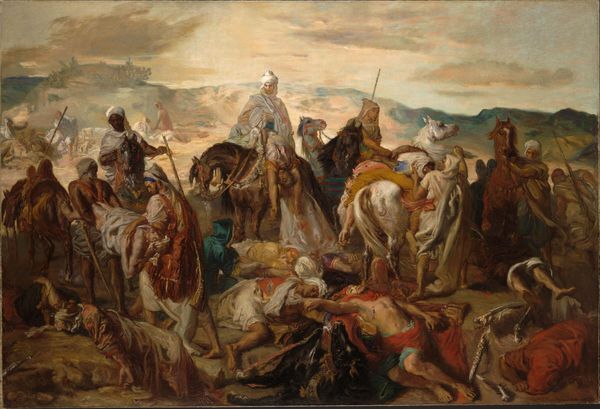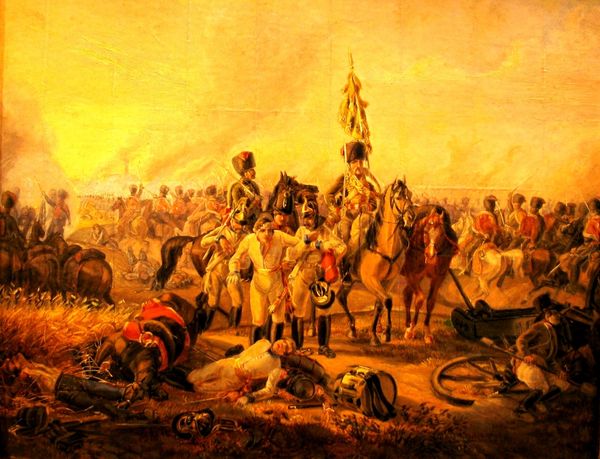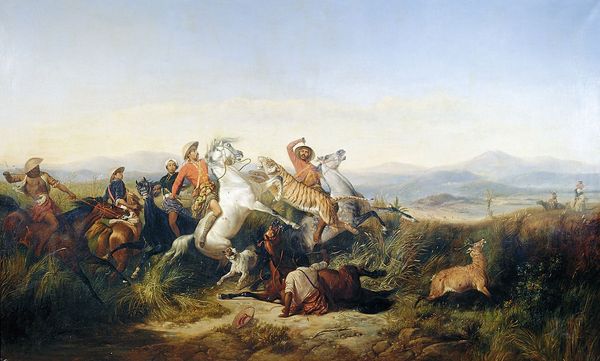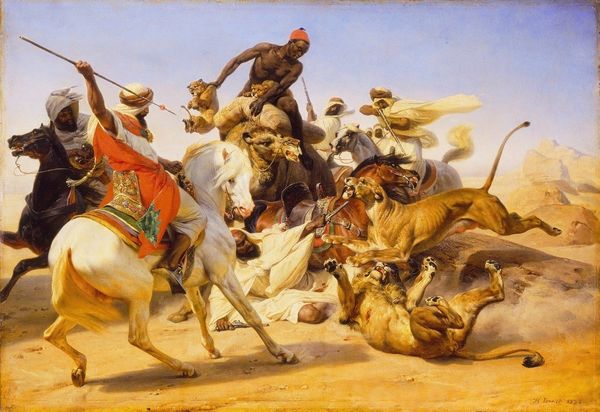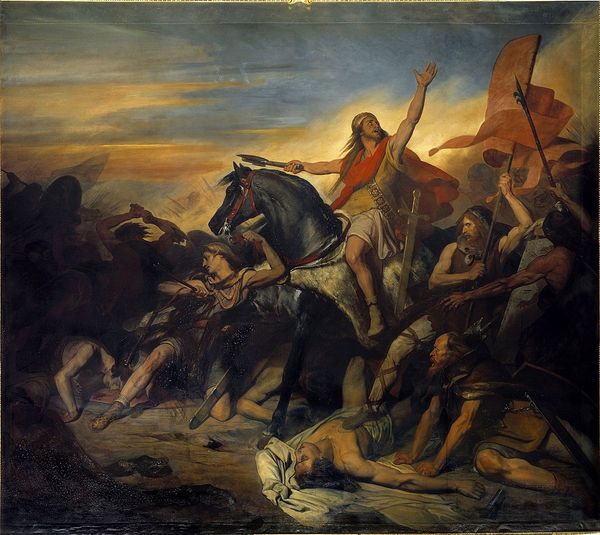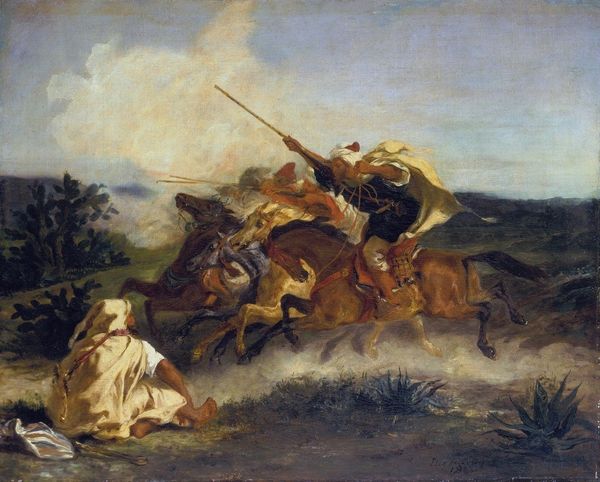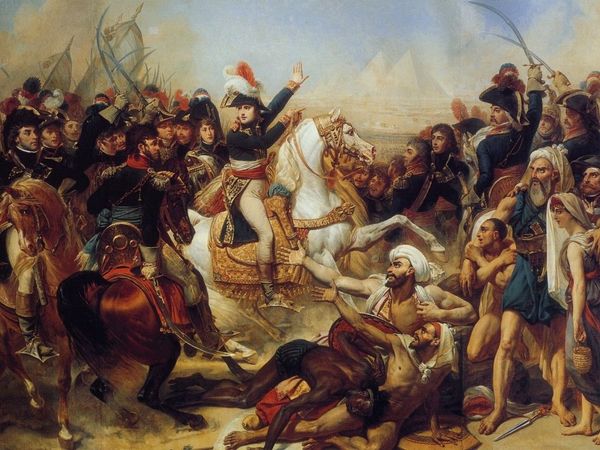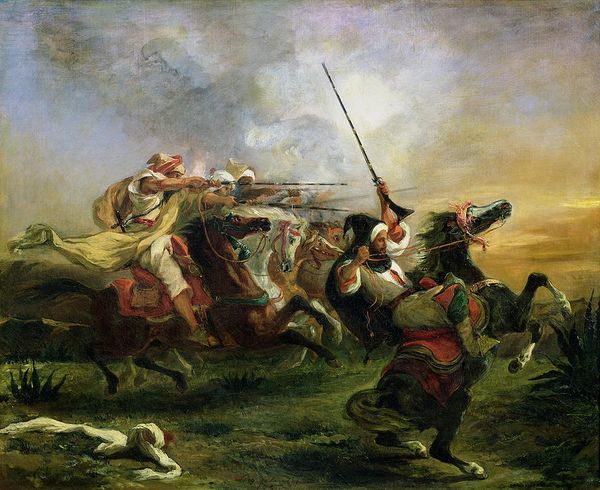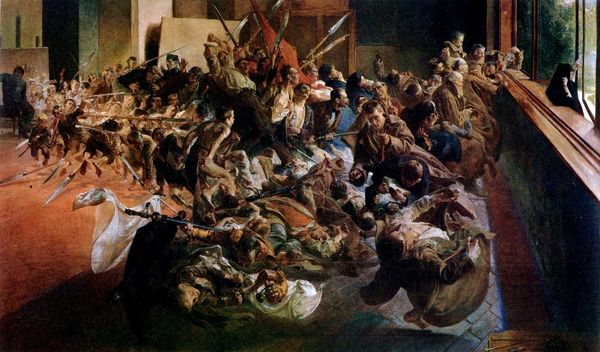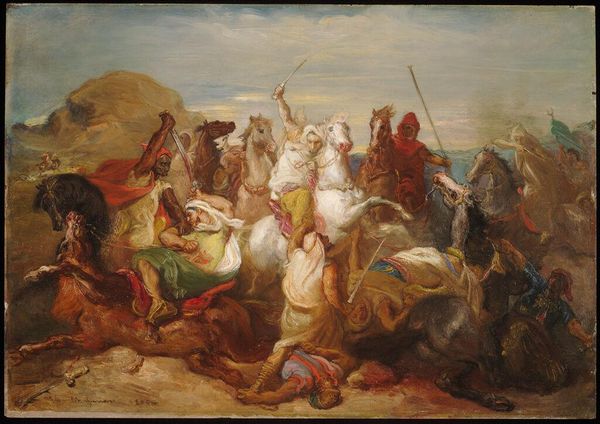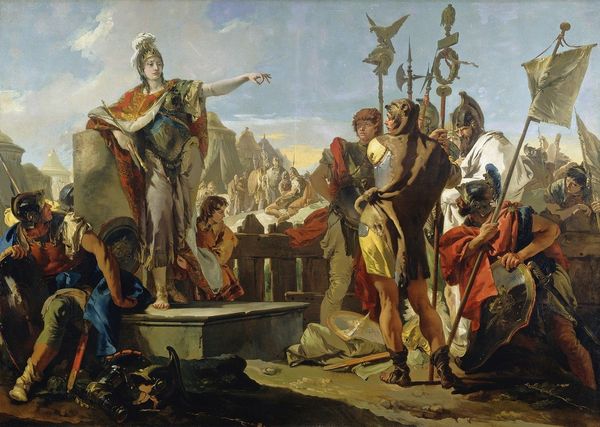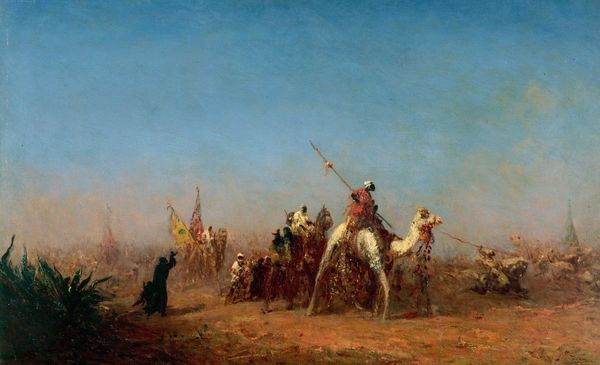
painting, oil-paint
#
figurative
#
painting
#
oil-paint
#
figuration
#
oil painting
#
romanticism
#
history-painting
#
academic-art
#
realism
Copyright: Public Domain: Artvee
Curator: Millais’s "Pizarro Seizing the Inca of Peru," executed in 1846 with oil paint, strikes me as an unsettling tableau. What’s your initial read? Editor: The light! It’s unnervingly bright in the distance, like a stage spotlight exposing everyone’s vulnerabilities. Compositionally, the artist positions the figures like frozen statuary in mid-action, with a powerful dramatic tension, which the palette strangely doesn't seem to mirror. Curator: Note the clear, almost academic rendering of fabrics, the meticulously crafted metal armaments, the exotic accoutrements of the Inca's royal garments. Do these details suggest a fidelity to historical accuracy or something else? Editor: I am interested in the leopard pelt the Inca clutches and the gestures of the Inca people, who are at once fearful and dignified. This isn't just about conquest, but the clash of worldviews and the imposition of one symbol set over another, erasing cultural memories. The cross looms imposingly. Curator: Millais cleverly employs sharp diagonals—the swords, the line of sight—to disrupt what might otherwise be a static scene. And consider the distribution of weight, how the Inca's figure commands the upper center while disorder reigns below. What message does this visual construction telegraph? Editor: It speaks volumes about power dynamics—who controls the gaze, whose narrative dominates. That animal pelt is potent: a sign of Indigenous sovereignty rendered powerless. We see not only a seizure of land but a profound disruption of symbolic order. Curator: Millais flattens the picture plane, drawing our attention to the formal relationships of shape, texture, and tone, even amidst the dramatic narrative unfolding. Editor: And it makes the whole scene almost dreamlike, adding to its haunting, and perhaps unsettling, effect on viewers accustomed to romanticizing empire. Curator: Ultimately, "Pizarro Seizing the Inca" reveals Millais's capacity to imbue historical subjects with an acute sense of design, even within a realism framework. Editor: I see in it an allegory of cultural domination where images, objects, and symbols act as both weapons and chronicles.
Comments
No comments
Be the first to comment and join the conversation on the ultimate creative platform.
